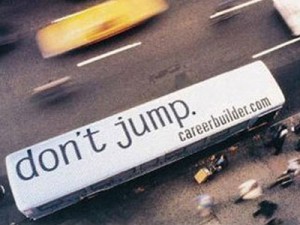As Super Bowl fans cheered on the Giants to victory, marketers drummed their fingers in anticipation of what would be either an advertising success or a complete waste of $3.5 million. But does this prime piece of advertising real-estate always provide a good return on a hefty investment? This year’s Super Bowl ads proved to be a bit of a bore. “Advertisers this year are playing it very safe,” said Tim Calkins, a professor of marketing at Northwestern University. “They’re running spots that are clearly designed to appeal to a broad audience and not to offend.” An ad for domain name-hosting site GoDaddy showed racecar driver Danica Patrick and fitness expert Jillian Michaels body painting a nude woman. An ad for clothing retailer H&M featured soccer star David Beckham in black-and-white in his new line of undies. And online florist Teleflora and automaker Kia both used Victoria Secret’s model Adriana Lima in their Super Bowl ads.
Ryan Abushinov’s blog entry (https://blogs.ubc.ca/ryanabushinov/2012/02/04/do-celebrity-endorsements-really-work/), entitled, ‘Do Celebrity Endorsements Really Work?’, questioned the power of Hollywood royalty to act as ‘opinion leaders’. According to Abushinov, negative celebrity publicity can have a severe effect on a marketing campaign. However, I believe that even positive celebrity can have a detrimental effect. Celebrities have always been the ‘go-to’ method as a means of generating consumer buzz. However, as we’ve seen with this year’s Super Bowl ads, even prominent celebrities can generate yawns. Despite using big names such as Adriana Lima and David Beckham, many advertisers settled on using cliche plots with kids, celebs, sex and humor.

Not all cars are created equal. Only a Chevy will save you from an imminent Mayan cataclysm.
One advertisement proved to spark interest, however. A GM ad that showed a Chevy Silverado truck surviving a 2012 Mayan end-of-the-world scenario won praise from marketing experts. In the 30 sec spot, a Dirty Harry-like Clint Eastwood proclaimed it “Halftime in America,” a reminder of Ronald Reagan’s optimistic “Morning in America” slogan, and chronicled Detroit’s fall and rise to rally the rest of the country. The spot “really stood out” among a heavy rotation of car commercials, said Tim Calkins, marketing professor at Northwestern University’s Kellogg School of Management.
Perhaps it is no longer celebrity that drives consumers to the shelves – or in this case, Chevy auto dealers – but the ability for an advertising to resonate with the consumer. The Eastwood ad generated online buzz for its emotional appeal and comments that it looked like an Obama re-election commercial from Chrysler, recipient of a taxpayer funded-bailout. The ability for a company to relate to the experiences of the consumer through politics, want of celebrity, and even fear of an imminent doomsday is a powerful tool even amongst competition during one of the most viewed sporting events in the world. At present, ads featuring babies, celebrities, and big musical productions seem just a little bit familiar.





